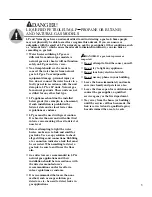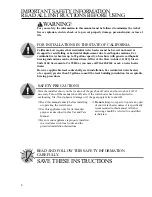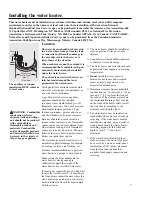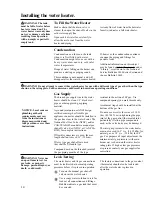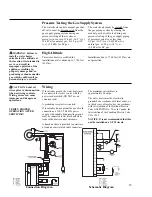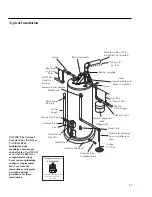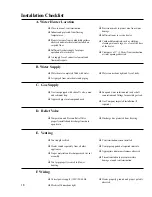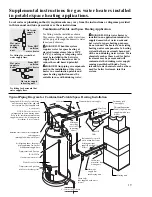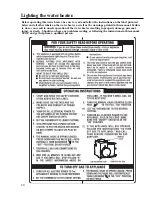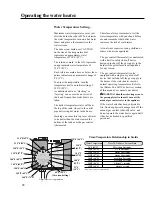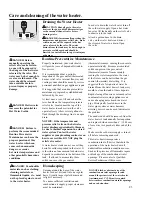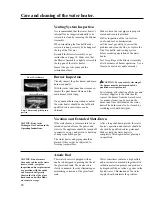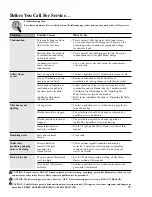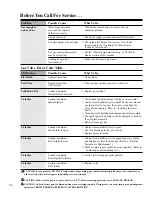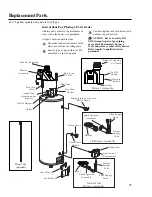
18
Installation Checklist
A. Water Heater Location
B. Water Supply
C. Gas Supply
D. Relief Valve
E. Venting
❑
Close to area of vent termination.
❑
Indoors and protected from freezing
temperatures.
❑
Proper clearance from combustible surfaces
observed and water heater not installed on
carpeted floor.
❑
Sufficient fresh air supply for proper
operation of water heater.
❑
Air supply free of corrosive elements and
flammable vapors.
❑
Provisions made to protect area from water
damage.
❑
Sufficient room to service heater.
❑
Combustible materials, such as clothing,
cleaning materials, rags, etc. clear of the base
of the heater.
❑
Clearances of 1” (2.54cm) from combustion
air inlet openings observed.
❑
Water heater completely filled with water.
❑
Air purged from water heater and piping.
❑
Water connections tight and free of leaks.
❑
Gas line equipped with shut-off valve, union
and sediment trap.
❑
Approved pipe joint compound used.
❑
Soap and water solution used to check all
connections and fittings for possible gas leak.
❑
Gas Company inspected installation (if
required).
❑
Temperature and Pressure Relief Valve
properly installed and discharge line run to
open drain.
❑
Discharge line protected from freezing.
❑
Vent length verified.
❑
Heater vented separately from all other
appliances.
❑
Proper materials and techniques used in vent
assembly.
❑
Vent pipe properly secured to blower
housing.
❑
Vent termination/screen installed.
❑
Vent pipe supported at required intervals.
❑
Appropriate minimum clearance observed.
❑
Precautions taken to prevent moisture
damage around vent termination.
F. Wiring
❑
Correct power supply (120V) 50/60 Hz.
❑
Electrical Connections tight.
❑
Heater properly ground and proper polarity
observed.


